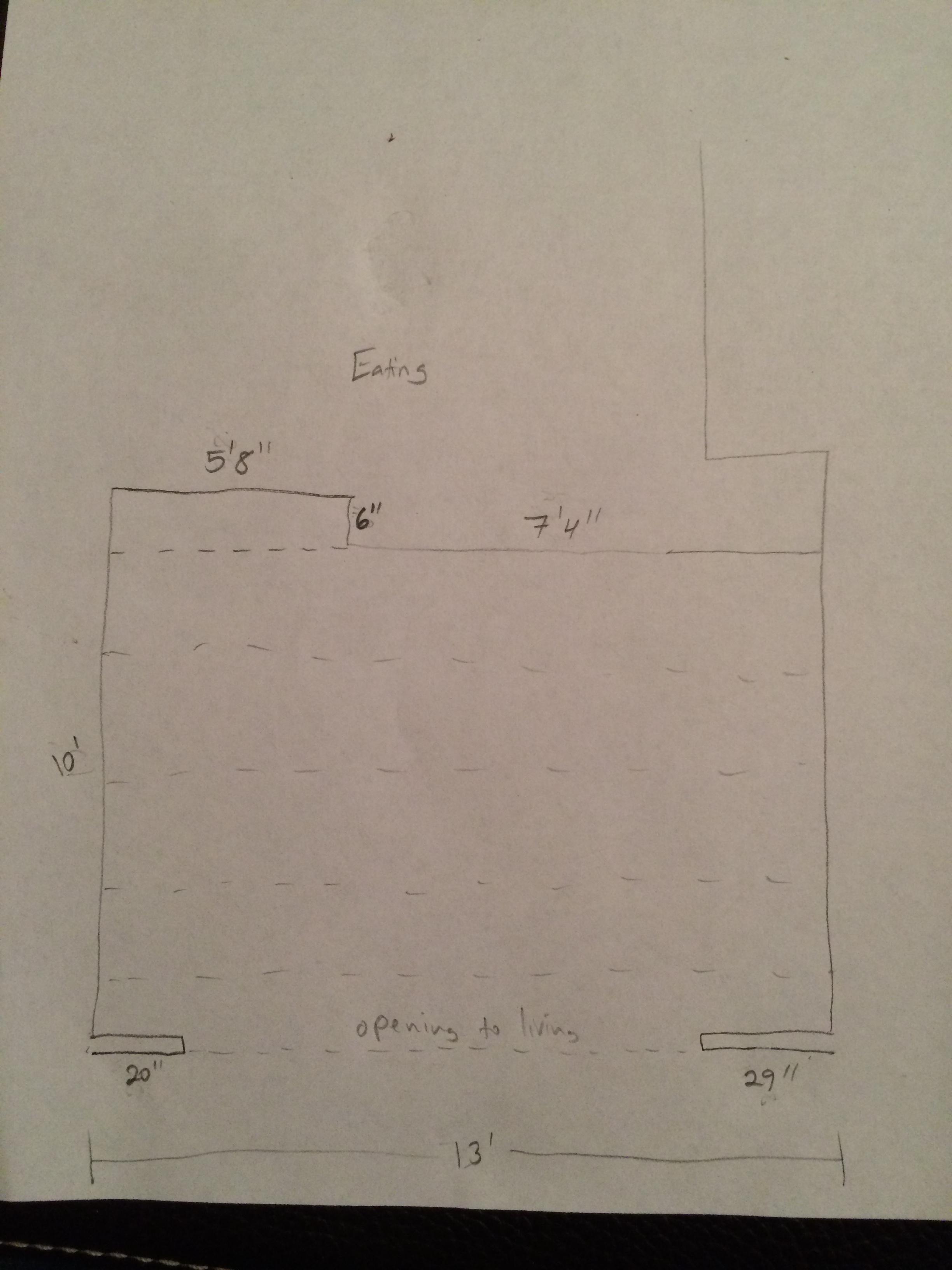I'm redoing my kitchen which adjoins the eating area. Part of this was removing the soffits or fur downs, which has now left my ceiling without large strips of drywall on 3 sides. 
The kitchen area is 10' deep and then another 10' of that is eating area, where the drywall is intact. I'm trying to decide if I just patch this or replace the ceiling in the kitchen. And how do I tie the new kitchen ceiling in with the eating area? I do plan to remove all the popcorn and go over with orange peel.
But I would need to stagger sheets of drywall, right so I wouldn't have one long line across the room between the two areas?
---Edit---
Tonight I tore down the kitchen part & cut back to the nearest stud. Here's a sketch of what I'm left to fill in (joists are dashed lines). Any advice on staggering? I plan to start on the left side and do 3 full sheets + 1 strip over the stove area.

